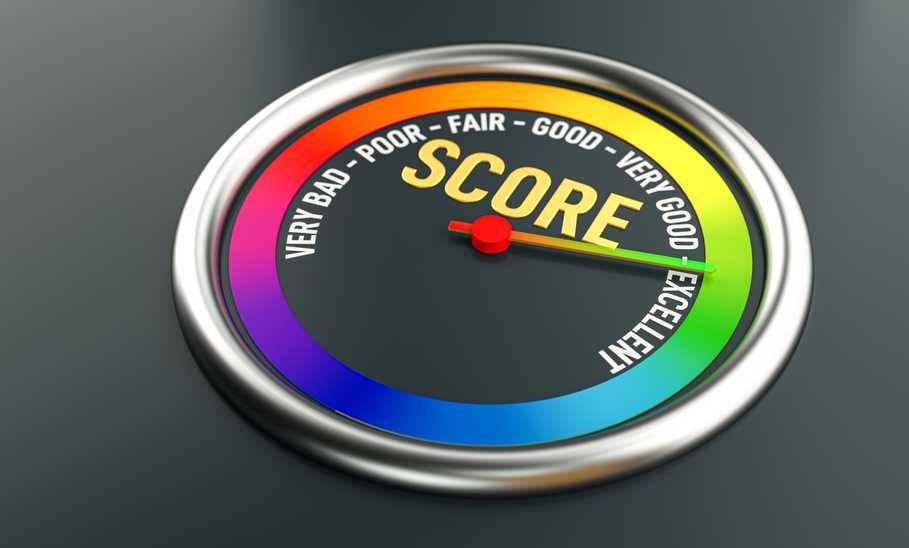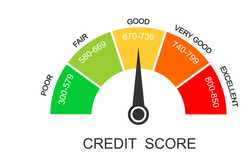Is a 760 Credit Score Good or Bad?


Our evaluations and opinions are not influenced by our advertising relationships, but we may earn a commission from our partners’ links. This content is created by TIME Stamped, under TIME’s direction and produced in accordance with TIME’s editorial guidelines and overseen by TIME’s editorial staff. Learn more about it.
Knowing your credit score is important if you plan to apply for a loan or credit card, but how can you tell what the number actually means? Credit scores can range from 300 to 850, and within that range are subsets that tell you whether your credit is considered good or bad.
There are two different credit scoring models: FICO and VantageScore. A 760 credit score sits firmly in the “very good” category for FICO and “good” category for VantageScore. The ranges for each scoring model are as follows:
| FICO | VantageScore | |
|---|---|---|
Very Poor | N/A | 300 to 499 |
Poor | 300 to 579 | 500 to 600 |
Fair | 580 to 669 | 601 to 660 |
Good | 670 to 739 | 661 to 780 |
Very Good | 740 to 799 | N/A |
Exceptional/Excellent | 800 to 850 | 781 to 850 |


If you have a 760 credit score, there’s a long list of financial products for which you can get approved, including mortgages, car loans, credit cards, student loans, and personal loans. Let’s take a look at each.
When reviewing an application for a conventional mortgage, lenders want to see borrowers with a credit score of at least 620. You’ll easily meet that requirement with a 760 score and likely be offered a lower interest rate when purchasing a home.
You also shouldn’t have trouble being approved for other types of mortgages, such as a jumbo loan (for mortgages higher than $726,200 or $1,089,300 in higher-cost areas), a Federal Housing Administration (FHA) loan, a United States Department of Agriculture (USDA) loan, or a Veterans Affairs (VA) loan, provided you also meet eligibility requirements. The exact rate you’ll get will depend on several factors, such as the prime interest rate, the length of the loan, and the amount of money you have for a down payment.
With a 760 credit score you likely won’t have trouble being approved for a car loan, and chances are you’ll be offered a low interest rate. With car loans it pays to shop around to look for the best deal, as your high credit score may open the door for special offers, such as 0% interest loans. A lower interest rate means you’ll pay less to take out the loan and less overall for the vehicle.
When it comes to credit cards, you’ll have your pick of the bunch with a 760 credit score. The credit cards listed below are all intended for customers with “good” or “excellent” credit scores (though these are not the only options available to you with your 760 credit score).
| Card name | Annual fee | Rewards rate | Intro offer |
|---|---|---|---|
card_name | annual_fees | Earn 2% cash back on all eligible purchases on up to $50,000 per calendar year, then 1%. 1% cash back on all eligible purchases after spending $50,000 per calendar year. | intro_apr_rate,intro_apr_duration and balance_transfer_intro_apr,balance_transfer_intro_duration. After the intro period, reg_apr,reg_apr_type. |
card_name (Rates & Fees) | Earn 6% cash back at U.S. supermarkets on up to $6,000 per year in purchases (then 1%). Earn 6% cash back on select U.S. streaming subscriptions; 3% cash back on transit, including taxis/rideshare, parking, tolls, trains, buses, and more; 3% cash back at U.S. gas stations; and1% cash back on other purchases. Terms apply. | bonus_miles_full | |
annual_fees | Get 5x miles per dollar on hotels and rental cars booked through Capital One Travel; 1.25x miles per dollar on all purchases. | bonus_miles_full |
If you are in need of a private student loan, it should be very easy to get approval with a 760 credit score. Student loans are known for having high interest rates, but with a 760 credit score you should have a lower interest rate than you would if your score was 50 points lower. (Private student loans should be your backup for additional funds after first getting a federal student loan with its special protections for borrowers.)
You shouldn’t have any problems finding a personal loan if you have a 760 credit score. Although improving your score could get you better rates and terms, most lenders will happily approve your application.
Because a 760 credit score is considered “good,” there really isn’t anything for which you can’t get approved. However, you may still be rejected when applying for a credit card or loan with a 760 credit score for one of the following reasons:
There are several ways you can improve your 760 credit score, including credit monitoring, careful budgeting, paying bills on time, building a bigger credit file, paying down credit card balances, and not applying for credit cards too often.
No matter your credit score, it’s a good idea to keep a close eye on it. This way you can quickly identify and resolve any issues, which can help you keep your score where you want it. There are several options out there for credit monitoring, including MyFICO and Experian.
Making (and sticking to) a budget can help ensure that you’re able to make payments on time, which can help improve your credit score. You can make a budget using a spreadsheet or get an app to help you do it and track your finances. This way you can make sure you’re paying off debt to help maintain your good credit score while also avoiding spending money on things you don’t need.
Consistently paying your bills on time is the easiest way to improve your credit score, as even a single missed payment can have a detrimental effect on it. If you’re diligent about paying on time, you’ll be able to build on your 760 credit score and get it into the 800s. Set up automatic billing to ensure that you’re paying on time and avoiding any late fees (and the effect they can have on your credit).
Ideally, your credit file will have a mix of installment loans and revolving credit. Installment loans have a set term and amount, and once they are paid off, you’re done with them. Some common examples include home loans, auto loans, and personal loans.
Revolving credit is an amount of money you’re approved to borrow that resets when you pay it off. Examples include credit cards and home equity lines of credit (HELOCS). Having a healthy mix of both can boost your credit score.
Having multiple high-balance credit cards can make you seem like a risky borrower, which makes lenders less likely to approve your loan or credit card applications. Work on paying down your balances to boost your credit and become more attractive in the eyes of a lender.
Applying for too many credit cards at once can have a detrimental effect on your credit and also be a red flag for credit card providers.
For rates and fees of the card_name, please visit this URL.
A 760 credit score opens the door to a wide range of loans and credit cards with low interest rates and impressive rewards. Although there’s still room to increase a 760 score, you’ll likely be offered similar terms and rates as you would with a score in the 800 range. Monitor your credit score carefully to make sure it stays in the “good” range and perhaps even rises to the level of “excellent.”
A 680 credit score falls in the “good” range for both FICO and VantageScore. You'll easily find loans and credit cards for which you’ll get approval, though you may get better terms and rates if you work on boosting your credit score slightly.
If you have a 600 credit score, you’ll fall in the “fair” range for FICO and the “poor” range for VantageScore. You’ll have more difficulty getting approved for loans and credit cards, so you’ll want to work on improving your credit and getting your score up into the “good” range or higher.
A 700 credit score is considered “good” by both FICO and VantageScore. Consumers with this score shouldn’t have trouble finding loans and credit cards, though it’s still a good idea to work on improving the score in order to get lower interest rates.
The information presented here is created by TIME Stamped and overseen by TIME editorial staff. To learn more, see our About Us page.



